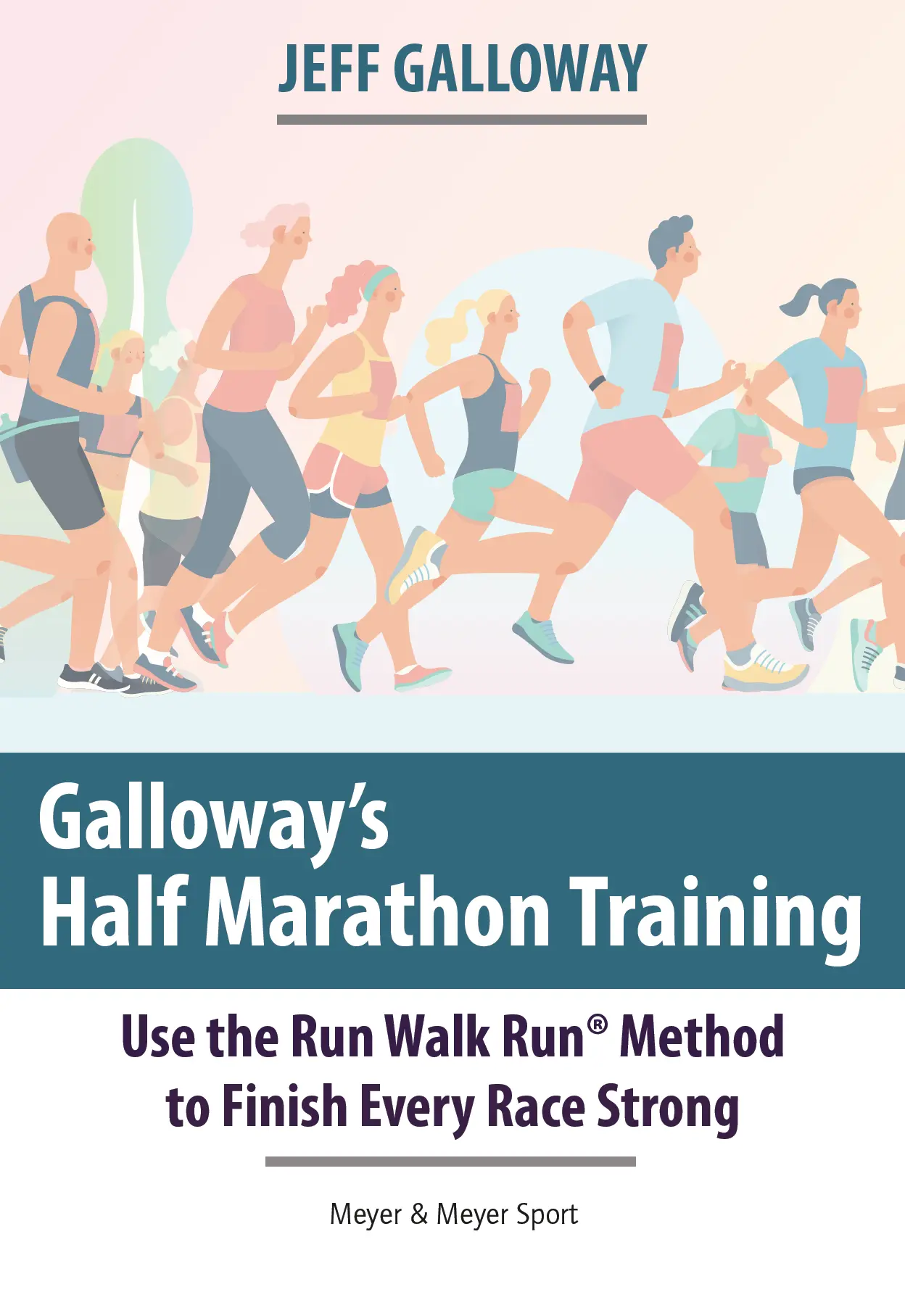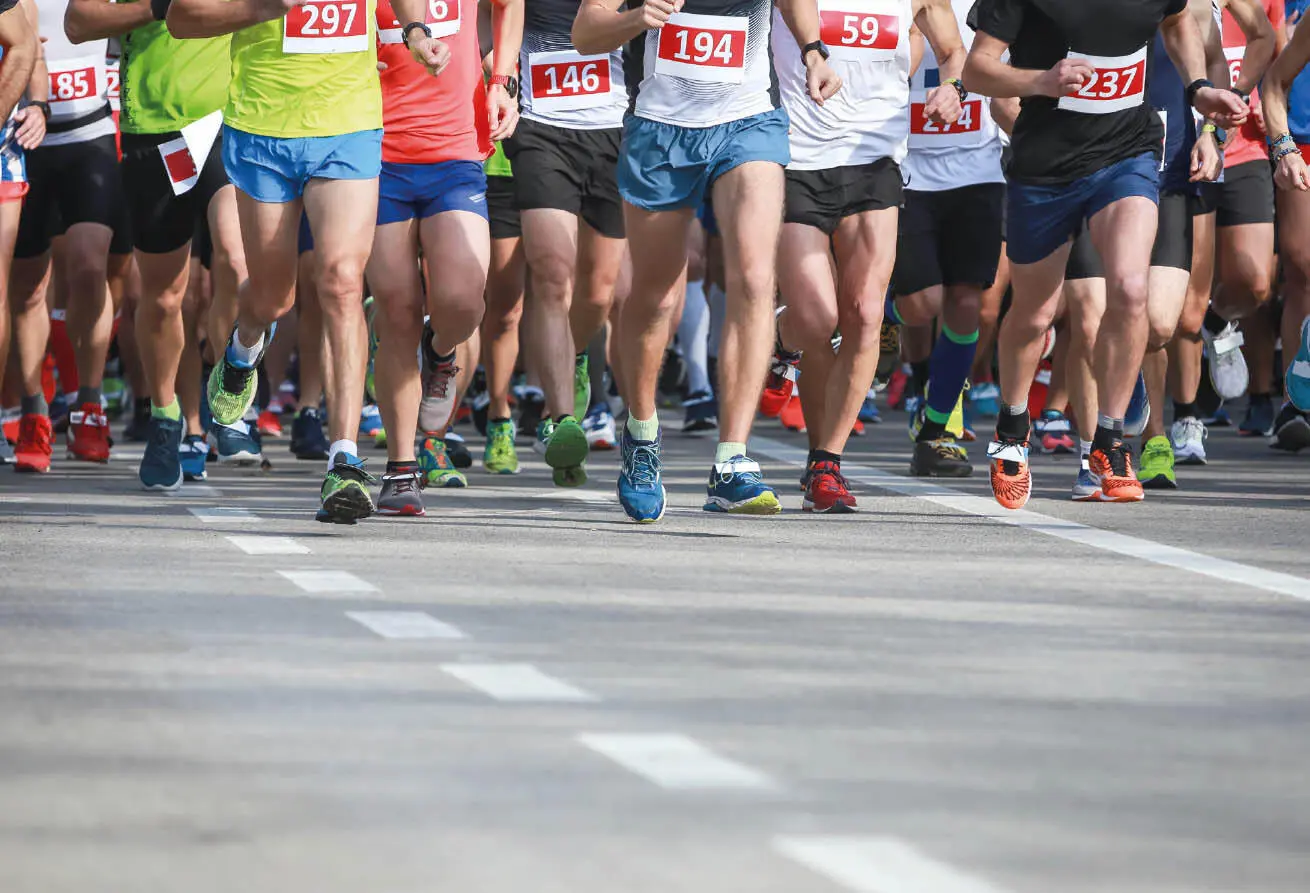The content of this book was carefully researched. However, readers should always consult a qualified medical specialist for individual advice before adopting any new exercise plan. This book should not be used as an alternative to seeking specialist medical advice.
All information is supplied without liability. Neither the author nor the publisher will be liable for possible disadvantages, injuries, or damages.

British Library Cataloguing in Publication Data
A catalogue record for this book is available from the British Library
Galloway’s Half Marathon Training
Maidenhead: Meyer & Meyer Sport (UK) Ltd., 2021
ISBN: 978-1-78255-220-8
All rights reserved, especially the right to copy and distribute, including translation rights. No part of this work may be reproduced–including by photocopy, microfilm or any other means–processed, stored electronically, copied or distributed in any form whatsoever without the written permission of the publisher.
© 2006, 2021 by Meyer & Meyer Sport (UK) Ltd.
5th Edition of the 1st Edition 2006
Aachen, Auckland, Beirut, Dubai, Hägendorf, Hong Kong, Indianapolis, Cairo, Cape Town, Maidenhead, Manila, New Delhi, Singapore, Sydney, Tehran, Vienna
 Member of the World Sport Publishers’ Association (WSPA), www.w-s-p-a.org
Member of the World Sport Publishers’ Association (WSPA), www.w-s-p-a.org
Printed by: Print Consult GmbH, Munich, Germany
Printed in Slovakia

ISBN: 978-1-78255-220-8
eISBN: 978-1-78255-505-6
Email: info@m-m-sports.com
www.thesportspublisher.com
1 WHY HAS THE HALF MARATHON BECOME SO POPULAR?
2 SETTING GOALS AND PRIORITIES
3 IMPORTANT HEALTH INFORMATION
4 PRACTICAL INFORMATION ON SHOES, EQUIPMENT, AND MORE
5 THE GALLOWAY RUN WALK RUN METHOD
6 CHOOSING THE RIGHT GOAL AND PACE
7 PRIMARY TRAINING COMPONENTS
8 BODY, MIND, AND SPIRIT RESPOND POSITIVELY TO TRAINING
9 HALF MARATHON TRAINING PROGRAMS
• BEGINNER
• TO FINISH
• TIME GOAL PROGRAM: 2:30-3:00
• TIME GOAL PROGRAM: 1:59-2:29
• TIME GOAL PROGRAM: 1:45-1:58
• TIME GOAL PROGRAM: 1:30-1:44
• TIME GOAL PROGRAM: 1:15-1:29
10 THE DRILLS TO MAKE RUNNING FASTER AND EASIER
11 HILL TRAINING BUILDS STRENGTH AND MORE
12 SPEED TRAINING PREPARES YOU FOR TOP PERFORMANCE
13 HOW SPEED TRAINING WORKS
14 RACE DAY TIMETABLE
15 YOUR JOURNAL WILL INSPIRE YOU
16 RUNNING FORM
17 LOWERING BODY FAT CAN HELP YOU RUN FASTER
18 FAT BURNING: THE INCOME SIDE OF THE EQUATION
19 GOOD BLOOD SUGAR = MOTIVATION
20 AN EXERCISER’S DIET
21 STAYING MOTIVATED
22 CROSS-TRAINING: EXERCISE FOR THE NON-RUNNING DAYS
23 DEALING WITH THE WEATHER
24 DESTROYING EXCUSES
25 TROUBLESHOOTING
26 TROUBLESHOOTING ACHES AND PAINS
27 RUNNING AFTER 40, 50, 60, 70

Chapter 1
WHY HAS THE HALF MARATHON BECOME SO POPULAR?
• Even after a difficult 13.1 mile (21K) race, runners can usually celebrate that evening
• Beginners who yearn to run a marathon see this distance as the first big step
• Marathoners find that the “half” keeps them in shape for their next “full”
• The distance is enough of a challenge to keep runners focused and energized
• Increasing long runs toward a half marathon race results in faster times at 5K, 10K, etc.
After studying findings of experts who specialize in ancient man, I’ve come to believe that training for long-distance events connects us directly to our roots. Primitive man had to walk and run for survival–thousands of miles a year. Through millions of years of evolution, the muscles, tendons, bones, energy systems and cardiovascular capacity adapted and expanded. A series of psychological rewards also developed, which make us feel good about ourselves when we run and walk at the correct pace in a consistent training program.
The primary goal of ancient migration was to reach the next destination. Likewise, the greatest joy for half marathoners comes in crossing the finish line. The perception among those who’ve run both marathons and half marathons is that running the “half” bestows more than half of the satisfaction and achievement of the “full”.
There are quite a few lessons to be learned as one extends one’s endurance limit beyond 13 miles or 21K: conservation of resources, pacing, fluid intake, blood sugar maintenance, etc. But making a mistake during “half” training does not incur the injury risk or the downtime experienced after marathon errors.
Veterans who’ve run the distance before will find in this book a series of highly successful training programs, based upon the time goal. You’ll be introduced to other training components that will make the journey more interesting. Be careful if you’re a veteran doing speed workouts: most of the injuries occur here. It is always best to be conservative.
If you find a way to enjoy a part of every run, your half marathon training can bring joy, satisfaction, achievement, and a positive sense of focus. For many, the challenge teaches individuals that they have unused hidden resources that can be used to deal with other challenges in life. Much of the success and joy comes from a unique endurance blending of body, mind and spirit.
Above all, you will find tools inside this book to take control over your fitness, your attitude, your endurance, your fatigue, your aches/pains, and your vitality. When you use these tools, you become the captain of an injury-free ship and can steer toward a number of positive experiences.
This book is written as one runner to another and is the result of more than 50 years of running, more than four decades of training for half and full marathons, and from having been the “coach” to more than 500,000 runners through my e-coaching, running schools, retreats, books, and individual consultations. None of the advice inside is offered as medical advice. To get help in this area, see a doctor or appropriate medical expert.
I salute all who put themselves to a realistic challenge. If you haven’t done this before, you have one of life’s great rewards waiting for you as you discover that you have much more strength inside than you envisioned.

Chapter 2
SETTING GOALS AND PRIORITIES
By focusing on a few key elements, you have the opportunity to take control over the enjoyment of the running experience. If you’re preparing for your first 21K race, I recommend that you choose the “to finish” schedule, and run slower on every run than you could run on that day. Even after the 20th or 100th race, you’re more likely to remember the details of your first one. Your mission, therefore, should be to weave the training runs, and the race itself, into a positive tapestry of memories that will enrich the rest of your life.
Читать дальше


 Member of the World Sport Publishers’ Association (WSPA), www.w-s-p-a.org
Member of the World Sport Publishers’ Association (WSPA), www.w-s-p-a.org













